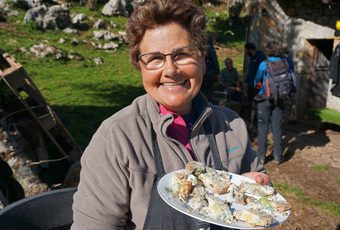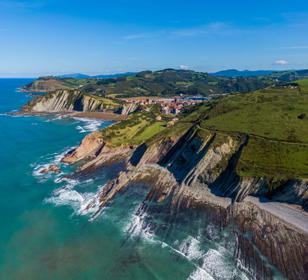Spain Holidays
From Barcelona to the Canary Islands, Andalucía to Menorca, Spain has an extraordinary wealth of landscapes, cities, food and culture. For 25 years we have been creating exceptional Spain holidays to share the places we love and indulge your explorer's spirit.
Blend days of discovery with time to enjoy your charming small hotels, get to know your welcoming hosts and linger over delicious local cuisine (wine optional, but encouraged).
Whether you're looking for a peaceful walk in the countryside, a city-hopping train journey or a relaxed drive through the best of everything, we have something special to share with you...
Want to reach Spain without flying? Just let us know as nearly as all our trips can be reached by land or sea, especially if you're a strong swimmer in the case of the islands.
47 Trips
-

![catalonia road autumn colours]()
![sagrada familia barcelona]()
![wine grapes harvest time penedes]()
![summer roses aiguestortes pyrenees]()
![catalonia garrotxa ventos sant jordi]()
![girona garrotxa santa pau]()
![Spain catalonia beer and shrimps cadaques c diego pura]()
![priorat vineyard serra de montsant catalonia]()
Catalonia Signature Drive
- Mountains to coast
- Food & wine heaven!
- As featured in The Times
From£3,000pp -

![aracena alajar arias montano top view]()
![alajar village in sierra de aracena]()
![couple walking in the sierra de aracena]()
![Spain andalucia finca la fronda pool]()
![Spain catalonia garrotxa mushrooms robellons]()
![Spain andalucia aracena pigs dehesa c jarcosa]()
![fine dining andalucia food]()
![giralda tower seville]()
![ham carving tapas bar in seville]()
![andalucia aracena village arch]()
Walks, Villages & Flavours of the Aracena Hills
- Grade 2
- Rural lifestyles
- Andalucía hidden gem
From£1,400pp -
![Local food and drink are an indulgent feature of the trip]()
![Stay at two idyllic Menorca countryside hotels]()
![In the cities you are based in small boutique hotels]()
![Inviting pools are a feature of your time here]()
![There are also plenty of chances to swim as you walk]()
Walking on Menorca's Coastal Trail
- Grade 2
- Quiet beaches
- Indulgent food, wine & hotels
From£2,250pp -

![swimming pool terra bonansa hotel]()
![Spain pyrenees ordesa autumn fall canva]()
![aiguestortes hike spain pyrenees]()
![Spain pyrenees ordesa ainsa sunset]()
![Spain aragon bonansa boi aigues tortes terra hotel room c terra]()
![Spain pyrenees food terra hotel bonansa pura aventura]()
![Spain pyrenees ainsa c restaurante callizo]()
![Spain pyrenees tella rooftops pura aventura]()
![pyrenees spring flowers ordesa]()
Walking Highlights of the High Pyrenees
- Grade 4
- Glorious scenery
- Choice of hikes
From£1,850pp -

![france bakery]()
![eiffel tower at sunset from pont alexandre]()
![la pedrera night visit]()
![ebiking in barcelona]()
![barcelona boqueira market]()
![tapas olympic pool montjuic barcelona]()
Ultimate Barcelona with Paris by Train
- Insider secrets
- Guided experiences
- Includes train travel from London
From£2,100pp -

![zahara beach in andalucia]()
![cheese tasting grazalema andalucia]()
![relaxing at countryside hotel in andalucia]()
![sherry olives andalucia]()
![guided coastal walk cadiz]()
![granada flamenco show]()
![tasting menu dinner granada]()
![giralda orange trees seville]()
![relaxing hotel near ronda]()
Andalucía Signature Drive
- Gourmet food & wine
- Choice of walks
- Richly local encounters
From£2,900pp
Loading more holidays...
Frequently Asked Questions
Why should I travel to Spain with Pura Aventura?
Are these private or group trips?
When is the best time to visit Spain?
What sort of hotels do I stay at?
Do I need to speak Spanish?
How active are the holidays?
How long do I need for a holiday to Spain?
Is Spain a good destination for an active family holiday?
How do I get a tailored itinerary?
Can I make changes to these itineraries?
What if I have more questions?
Spain with Pura Aventura

Why You'll Love Spain
Spain's wealth of landscapes, food, wine, history and culture is legendary. You could spend a lifetime exploring and still come back for one more walk, one more grand vista, one more evening in a sunlit village square...

Why You'll Love Pura Aventura
As an Anglo-Spanish family, most of us have lived in Spain, some still do, whilst others escape here on holiday whenever they can. This mix of life-long love and fresh eyes lets us create genuinely special trips you'll love.

































































